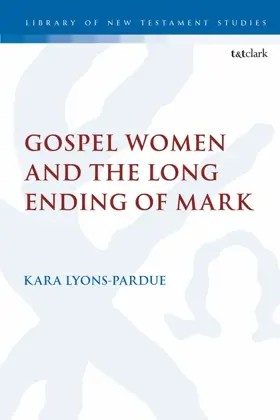

Gospel Women and the Long Ending of Mark
in Library of New Testament Studies
Pages
224
Publisher
T&T Clark
Published
1/23/2020
ISBN-13
9780567692405
Kara Lyons-Pardue examines the issue of the ending of the gospel of Mark, showing how the later additions to the text function as early receptions of the original gospel tradition providing an ancient “fix” to the problem of the ending in which the women flee the tomb in terror and silence. Lyons-Pardue suggests that the long ending functions canonically, smoothing out the “problem” of 16:8 in ways that support the nascent four-gospel canon.
Lyons-Pardue argues that the long ending represents an ancient reception of the preceding gospel that continues to the unique portrait of discipleship that is characteristically Markan. Mary Magdalene forms the renewed paradigm of an unlikely person or outsider, here a woman, being the one to “go and tell” the good news. This pattern is then projected onto all disciples who are called to proclaim the news to the entire created order (16:15).
Lyons-Pardue argues that the long ending represents an ancient reception of the preceding gospel that continues to the unique portrait of discipleship that is characteristically Markan. Mary Magdalene forms the renewed paradigm of an unlikely person or outsider, here a woman, being the one to “go and tell” the good news. This pattern is then projected onto all disciples who are called to proclaim the news to the entire created order (16:15).
- Table of contents
- List of Tables
- Abbreviations
- List of Abbreviations of Ancient Sources
- Acknowledgements
- Abbreviations
- Introduction
- 1. Scholarly Inquiry into the Long Ending as a Conclusion to Mark's Gospel
- 2. Mary Magdalene in the Long Ending and Mark
- 3. Unfaithful Disciples in the Long Ending and Mark
- 4. Being Disciples Like Mary Magdalene: Implications of the Long Ending's Reading of Mark
- Appendix: The Many Endings to Mark's Gospel: Introductions, Text, and Translations
- Bibliography
- Index